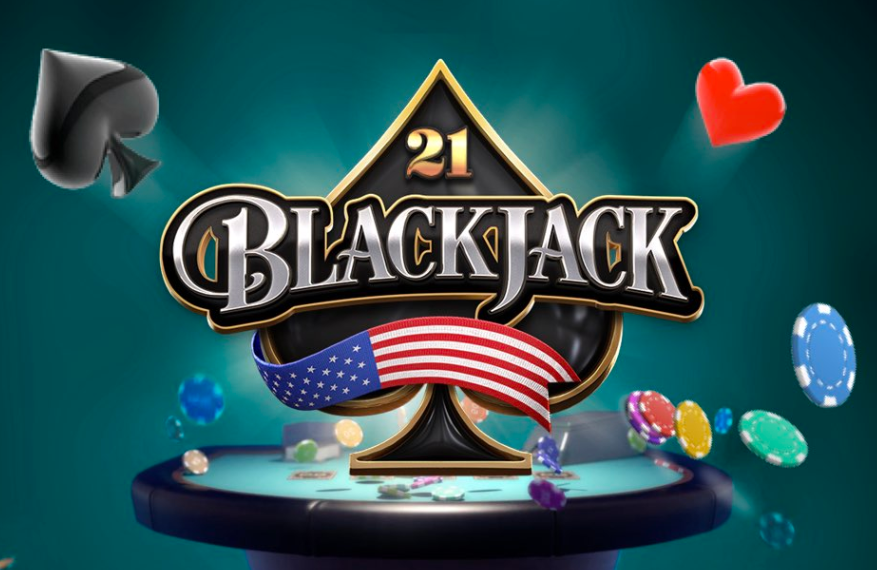Introduction to American Blackjack
 American Blackjack online continues to be a favored variation of the traditional casino card game, attracting both experienced players and those new to the scene. This version, frequently showcased in leading casinos and online platforms, introduces unique modifications to the classic rules that both heighten the game’s thrill and introduce new strategic dimensions. The purpose of this guide is to delve into the complexities of American Blackjack, aiding players in comprehending its rules, strategies, and the nuances that set it apart from other variants.
American Blackjack online continues to be a favored variation of the traditional casino card game, attracting both experienced players and those new to the scene. This version, frequently showcased in leading casinos and online platforms, introduces unique modifications to the classic rules that both heighten the game’s thrill and introduce new strategic dimensions. The purpose of this guide is to delve into the complexities of American Blackjack, aiding players in comprehending its rules, strategies, and the nuances that set it apart from other variants.
What is American Blackjack and how it differs from other variants
American Blackjack, especially when played online, features distinct gameplay mechanics that distinguish it from other blackjack forms such as European Blackjack. A key difference is the method of dealing the dealer’s cards. In American Blackjack, the dealer gets one card face up and another face down (the “hole card”), a hallmark of this American version. This alteration plays a crucial role in influencing both the gameplay dynamics and the strategies players adopt.
The historical roots and origins of the game in America
Blackjack’s development has been substantial since its origin. It gained immense popularity in the United States in the early 20th century when it was legalized in casinos to provide a fair and transparent gaming experience. American casinos introduced the hole card concept, which has become a staple of American Blackjack. This innovation was designed to enhance casino security and increase player excitement.

Fundamental rules of American Blackjack
The core American Blackjack rules online center on the objective of outscoring the dealer’s hand without going over 21 points. Initially, each player receives two cards, with the dealer’s first card dealt face up and the second face down. Players then choose whether to hit, stand, double down, or split based on their hands. Often, this variant also includes an option for late surrender, which allows players to give up half their wager after the dealer checks for blackjack.
Card values, number of decks, and the game’s objective
In American Blackjack online, the cards from two to ten hold their face values. Face cards (Jack, Queen, King) are worth ten points and the Ace can count as either one or eleven, depending on which value is more favorable to the player’s hand. Typically, the game uses six to eight decks in a shoe, reducing the predictability of card sequences and heightening the challenge. The main aim is to secure a hand value nearer to 21 than the dealer’s, without surpassing it.
Key differences between American and European Blackjack: the “Hole Card” rule
The hole card rule stands out as the primary distinguishing feature of American Blackjack. This rule permits the dealer to peek at the face-down card if their face-up card is an Ace or a card worth ten points. This preemptive check for blackjack before players proceed with their decisions offers a tactical advantage, enabling more informed decisions based on the likelihood of the dealer holding blackjack.
| Aspect | American Blackjack | European Blackjack |
|---|---|---|
| Hole Card | Dealer receives one card face up and one face down (the “hole card”) at the start. | Dealer only receives one face-up card initially; the second card is dealt after players have completed their hands. |
| Early Detection of Blackjack | Dealer checks the hole card for Blackjack if the face-up card is an Ace or 10-value card, ending the round if Blackjack is confirmed. | No hole card to check, so players must complete their hands before the dealer reveals a possible Blackjack. |
| Impact on Strategy | Players can adjust strategy knowing if the dealer has Blackjack early on. | Players face a greater risk of losing additional bets due to the dealer’s undisclosed hand until the end of the round. |
How American Blackjack is played
The game of American Blackjack starts with each player placing a bet. The dealer then distributes two cards to each player and two to themselves, with one of the dealer’s cards remaining face down. Players then evaluate their hands and decide their next actions—whether to hit, stand, double down, or split—taking into consideration the dealer’s visible card and the potential contents of the hole card.
A step-by-step walkthrough of a typical hand
Dealer actions, including the peek for blackjack
 Upon dealing the initial cards, the dealer peeks at their hole card if their up card is an Ace or a ten-value card. If the hole card completes a blackjack, the hand ends unless players also have a blackjack, which results in a push.
Upon dealing the initial cards, the dealer peeks at their hole card if their up card is an Ace or a ten-value card. If the hole card completes a blackjack, the hand ends unless players also have a blackjack, which results in a push.
Player choices
Players evaluate their hand’s strength against the dealer’s up card. Based on this comparison, players decide their course—taking an additional card (hit), refraining from taking more cards (stand), doubling their initial bet in exchange for only one more card (double down), or splitting a pair into two separate hands.
Options available to the player: hit, stand, double down, split, surrender
In American Blackjack, players have several options to enhance their gameplay. The choice to hit or stand is basic, while the ability to double down or split pairs depends on the cards received. Surrender is sometimes available, allowing a strategic withdrawal from a potentially losing hand by forfeiting half the bet.
Special rules for splitting and doubling down in American Blackjack
 Splitting in American Blackjack online allows players to divide a pair of cards of the same rank into two separate hands, playing each hand individually. Doubling down lets a player double their bet on a promising hand, but they must commit to taking only one more card. These options, when used wisely, can significantly increase a player’s winnings.
Splitting in American Blackjack online allows players to divide a pair of cards of the same rank into two separate hands, playing each hand individually. Doubling down lets a player double their bet on a promising hand, but they must commit to taking only one more card. These options, when used wisely, can significantly increase a player’s winnings.
House edge and winning payouts
The house edge in American Blackjack is around 0.5% with optimal play, making it one of the more player-friendly casino games. Standard winning payouts are 3:2 for a blackjack and 1:1 for other winning hands, with insurance bets paying 2:1 if the dealer has blackjack.
Understanding the house edge in American blackjack
The house edge in American Blackjack online varies but is typically around 0.5% with optimal play. This relatively low house edge makes it one of the more favorable casino games for players.
Standard payout rates for winning hands, including insurance bets
The standard payout for a winning hand in Blackjack American is 3:2 for a blackjack and 1:1 for other winning hands. Insurance bets, offered when the dealer’s up card is an Ace, pay 2:1 if the dealer has blackjack.
Beginner strategies
Beginners should adhere to a basic strategy chart, which details optimal decisions based on one’s hand versus the dealer’s visible card. Managing your bankroll effectively by setting betting limits relative to your total funds is also crucial.
Using a basic strategy chart
For beginners, using a basic American Blackjack strategy chart is crucial. These charts provide a guide on how to act based on the player’s hand and the dealer’s up card, optimizing the chances of winning based on statistical probabilities.
Bankroll management tips and smart betting practices
 Effective bankroll management is essential in American Blackjack online. Players should set clear limits on their bets relative to their total bankroll to avoid rapid depletion of funds. Smart betting includes understanding betting spreads and not chasing losses with larger bets.
Effective bankroll management is essential in American Blackjack online. Players should set clear limits on their bets relative to their total bankroll to avoid rapid depletion of funds. Smart betting includes understanding betting spreads and not chasing losses with larger bets.
Common pitfalls to avoid
New players often stray from the basic strategy, increasing the house edge. Mismanaging bankroll and misunderstanding the impact of the number of decks and certain hand values, like treating a soft 18 as a strong hand, are typical errors to avoid.
Typical mistakes beginners make in gameplay and strategy
New players often make the mistake of deviating from basic strategy, leading to higher house edges. Additionally, failing to adjust bets based on a true count in card counting or mismanaging their bankroll can lead to significant losses.
Misunderstandings about rules and odds
A common misunderstanding among new players is overvaluing hands like a soft 18 or not recognizing the impact of the number of decks on the game’s odds. Being aware of these nuances can prevent costly errors in play American Blackjack.


